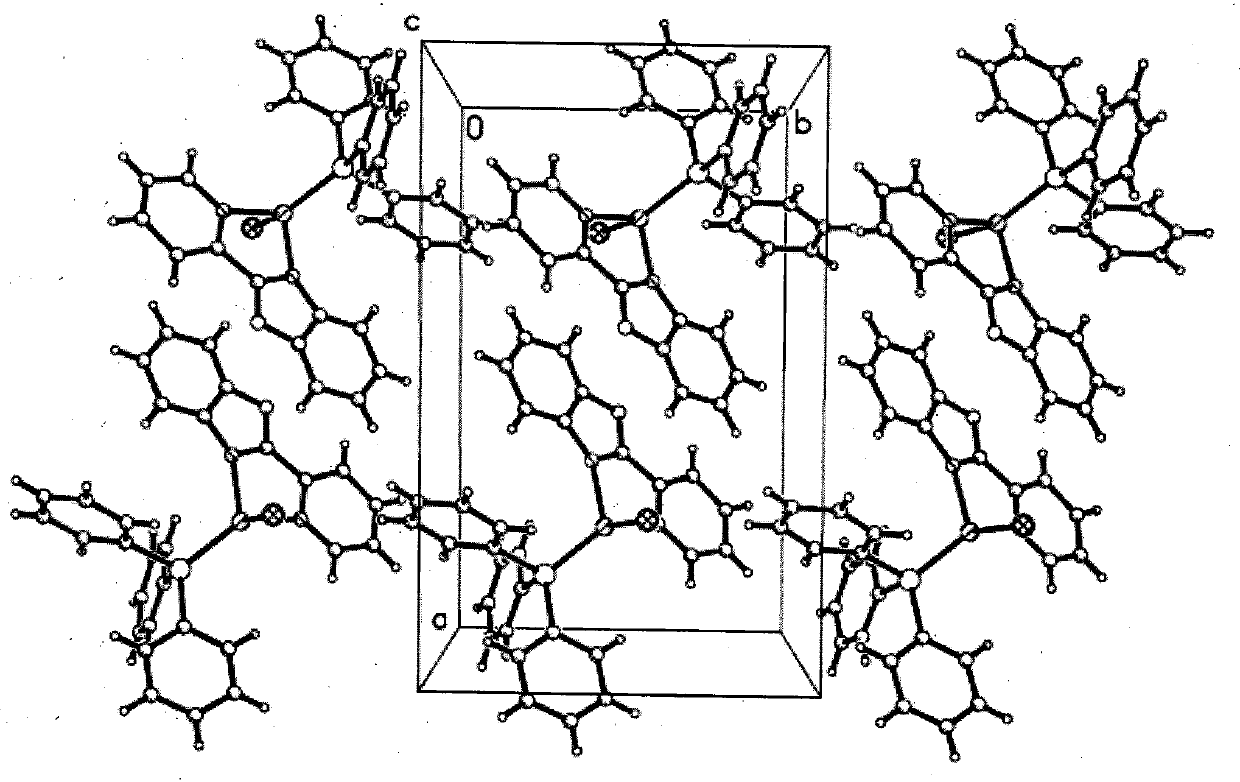CuIN2P cuprous complex light-emitting material based on benzoxazolyl pyridine
A luminescent material and benzoxazole technology, applied in the field of organic electroluminescent materials and luminescent materials, can solve the problem that the luminous intensity cannot meet the application requirements, achieve good phosphorescence emission performance, suppress non-radiative attenuation, and thermal stability Good results
- Summary
- Abstract
- Description
- Claims
- Application Information
AI Technical Summary
Problems solved by technology
Method used
Image
Examples
Embodiment 1
[0032] Preparation of a large number of microcrystalline samples: Weigh 0.5 mmol of CuI and dissolve it in 10 mL of acetonitrile, weigh 0.5 mmol of triphenylphosphine ligand and dissolve it in 8 mL of dichloromethane, mix the two solutions, and stir to make Coordination reaction fully occurs to obtain colorless solution A; then weigh 0.5mmol of 2-PBO ligand and dissolve it in 8mL of acetonitrile, then add this solution into the above solution A, and stir to make the coordination reaction fully occur, and finally The obtained orange-yellow reaction liquid was rotary evaporated to remove all solvents, and dried in vacuo to obtain orange-yellow crystalline powder as the product with a yield of 92% (calculated as Cu).
Embodiment 2
[0034] Synthesis of phosphorescent cuprous complex CuI(2-PBO)(PPh 3 ) single crystal: Weigh 0.1 mmol of CuI and dissolve it in 3 mL of acetonitrile, weigh 0.1 mmol of triphenylphosphine ligand and dissolve it in 3 mL of dichloromethane, mix these two solutions, and stir to make it fully complexed Then, weighed 0.1mmol of 2-PBO ligand and dissolved it in 2mL of acetonitrile, then added this solution into the above-mentioned solution A, and stirred to make the coordination reaction fully occur, and finally the obtained orange-yellow The solution was filtered, and the filtrate was covered with n-hexane to promote the crystallization of the product. After standing for several days, a large number of orange-yellow block crystals were precipitated. An orange-yellow block transparent crystal with a size of 0.30mm×0.26mm×0.23mm was selected for X-ray single crystal diffraction structure test. The molecular structure of the compound is shown in the attached figure 1 , and its unit ce...
PUM
| Property | Measurement | Unit |
|---|---|---|
| fluorescence lifetime | aaaaa | aaaaa |
Abstract
Description
Claims
Application Information
 Login to View More
Login to View More - R&D
- Intellectual Property
- Life Sciences
- Materials
- Tech Scout
- Unparalleled Data Quality
- Higher Quality Content
- 60% Fewer Hallucinations
Browse by: Latest US Patents, China's latest patents, Technical Efficacy Thesaurus, Application Domain, Technology Topic, Popular Technical Reports.
© 2025 PatSnap. All rights reserved.Legal|Privacy policy|Modern Slavery Act Transparency Statement|Sitemap|About US| Contact US: help@patsnap.com



